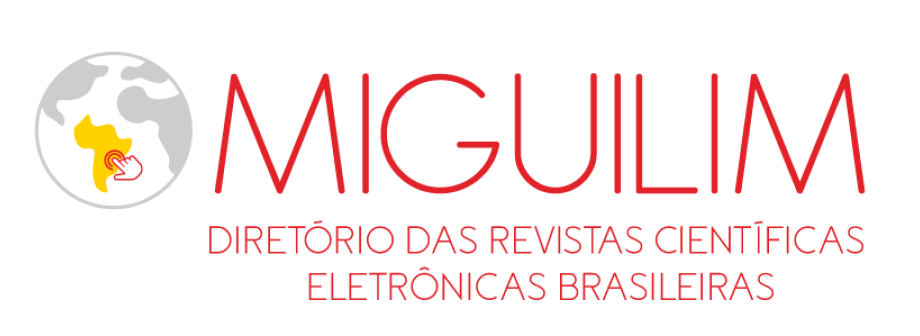The role of information and artificial intelligence in diagnosis with medical devices
DOI:
https://doi.org/10.5281/zenodo.14226152Keywords:
Technology in the hospital field, Health 4.0, Artificial Intelligence in healthcare, Smart medical devices, Information for decision-makingAbstract
Context: The use of technology in the hospital area has been essential to improve the
prevention, diagnosis and treatment of various diseases. For example in Health 4.0, with
resources such as Artificial Intelligence (AI), Robotics, Internet of Things (IoT) and Computing
in the Cloud, has been increasingly used in the hospital environment, providing information
accurate and real-time to support medical decision making. Problem: Medical devices
(DMs), including implantable ones, are paving the way for new advances in medicine and
in healthcare, the question is which AI technological solutions are applied in
medical diagnosis, using information from the daily lives of patients with DM. Method:
A bibliographical search was carried out in search of an answer to the research question,
using the Scopus platform. Objective: The objective was to identify
which relevant information from the daily life of patients with implanted DM can help in
medical diagnostic guidance in technological solutions with AI, considering the
patients' perspective on the use of these devices. Final considerations: This study
revealed a lack of research that explores the application of AI technologies in
medical devices, allowing them to behave intelligently. Stands out
still the lack of integration of these technologies with everyday patient information to
assist in diagnosis and clinical decision-making.
Downloads
References
ABIIS. Saúde 4.0 - Propostas para Impulsionar o Ciclo das Inovações em Dispositivos
Médicos (Dmas) no Brasil. São Paulo: Aliança Brasileira da Indústria Inovadora em Saúde –
ABIIS, 2015.
ABUHAV, I. ISO 13485:2016 A complete Guide to Quality Management in the Medical
Dvice Industry. New York: CRC press, 2013. v. 53
ANVISA. Dispositivo Médico: Conceitos e definições - Agência Nacional de Vigilância
Sanitária. Disponível em: <https://www.gov.br/anvisa/pt-
br/acessoainformacao/perguntasfrequentes/produtosparasaude/conceitos-e-
definicoes#:~:text=médico terapêutico ativo-,Qualquer dispositivo ativo utilizado
isoladamente ou em combinação com outros,uma doença%2C lesão ou deficiência.>. Acesso
em: 29 out. 2023.
CULJAT, M.; SINGH, R.; LEE, H. Medical devices: surgical and image-guided
technologies. New Jersey: Wiley, 2020. v. 21
ELSEVIER, S. Scopus Content coverage guide. Amsterdam. Elsevier BV, v. 2, p. 947–955,
GIL, A. C. Métodos e Técnicas de Pesquisa Social. 7. ed. São Paulo: Atlas, 2019.
GUSMÃO, C. A.; SOUZA, M. M. C.; MOURA, C. G. G. DE. Raciocínio Clinico -
Diagnóstico Diferencial à Beira do Leito. Salvador - BA: SANAR, 2018.
JENNINGS, D. et al. Introduction to medical electronics. Boston: Butterworth-Heinemann,
KOCABALLI, A. B. et al. The Personalization of Conversational Agents in Health Care:
Systematic Review. Journal of Medical Internet Research, v. 21, n. 11, p. e15360, 7 nov.
KOERNER, C.; ROSEN, S. A. How robotics is changing and will change the field of
colorectal surgery. World Journal of Gastrointestinal Surgery, v. 11, n. 10, p. 381–387, 27
out. 2019.
MAEDER, A. J. et al. (EDS.). Telehealth Innovations in Remote Healthcare Services
Delivery. [s.l.] IOS Press, 2021. v. 277
MARTINS, R. S. et al. Multidimensional Quality of Life After Robotic Versus Laparoscopic
Surgery for Rectal Cancer: A Systematic Review and Meta-Analysis. World Journal of
Surgery, v. 64, n. 3, p. 256–258, 14 fev. 2023.
MEC. Orientações para descrição de imagem na geração de material digital acessível –
Mecdaisy,. Secretaria de Educação Continuada, Alfabetização, Diversidade e Inclusão, n.
, p. 10, 2012.
MONACO, C. F. Sistemas informatizados de apoio à decisão clínica baseada em
evidência e centrada no paciente: uma revisão sistemática. São Paulo: Universidade de
São Paulo, 1 mar. 2017.
MUSTAPHA, I. et al. Impact of Industry 4.0 on Healthcare: A Systematic Literature Review
(SLR) from the Last Decade. International Journal of Interactive Mobile Technologies
(iJIM), v. 15, n. 18, p. 116, 20 set. 2021.
NASCIMENTO NETO, C. D. et al. Inteligência artificial e novas tecnologias em saúde:
desafios e perspectivas. Brazilian Journal of Development, v. 6, n. 2, p. 9431–9445, 2020.
NELSON, B. D. et al. Wireless Technologies for Implantable Devices. Sensors, v. 20, n. 16,
p. 4604, 16 ago. 2020.
PUSKIN, D. S. Opportunities and challenges to telemedicine in rural America. Journal of
Medical Systems, v. 19, n. 1, p. 59–67, fev. 1995.
RODRIGUES, J. J. P. C.; DE LA TORRE DÍEZ, I.; SAINZ DE ABAJO, B. (EDS.).
Telemedicine and E-Health Services, Policies, and Applications. [s.l.] IGI Global, 2012.
SEKHON, H. et al. Telemedicine and the rural dementia population: A systematic review.
Maturitas, v. 143, p. 105–114, jan. 2021.
SEVERINO, P. et al. Structural and myocardial dysfunction in heart failure beyond ejection
fraction. Heart Failure Reviews, v. 25, n. 1, p. 9–17, 17 jan. 2020.
SILVA, D. F. J.; HATTORI, W. T.; BONITO, R. F. Sistemas de apoio à decisão clínica e
desfecho clínico na Atenção Primária à Saúde. Revista de APS, v. 25, 16 ago. 2022.
SINGH, L. K. et al. Performance evaluation of various deep learning based models for
effective glaucoma evaluation using optical coherence tomography images. Multimedia
Tools and Applications, v. 81, n. 19, p. 27737–27781, 28 ago. 2022.
SONY, M.; ANTONY, J.; MCDERMOTT, O. The Impact of Healthcare 4.0 on the
Healthcare Service Quality: A Systematic Literature Review. Hospital Topics, p. 1–17, 24
mar. 2022.
SOOD, S. K.; RAWAT, K. S.; KUMAR, D. A visual review of artificial intelligence and
Industry 4.0 in healthcare. Computers and Electrical Engineering, v. 101, p. 107948, jul.
THUEMMLER, C.; BAI, C. (EDS.). Health 4.0: How Virtualization and Big Data are
Revolutionizing Healthcare. Cham: Springer International Publishing, 2017.
USLU, A.; STAUSBERG, J. Value of the Electronic Medical Record for Hospital Care:
Update From the Literature. Journal of Medical Internet Research, v. 23, n. 12, p. e26323,
dez. 2021.
WEARS, R. L.; HOLLNAGEL, E. Resilient Health Care, Volume 2: The Resilience of
Everyday Clinical Work. London: CRC Press, 2017.
Published
How to Cite
Issue
Section
Copyright (c) 2023 Revista Processando o Saber

This work is licensed under a Creative Commons Attribution 4.0 International License.
Os direitos autorais dos artigos publicados pertencem à Revista Processando o Saber e seguem o padrão Creative Commons (CC BY), que permite o remixe, adaptação e criação de obras derivadas do original, mesmo para fins comerciais. As novas obras devem conter menção ao(s) autor(es) nos créditos.
























